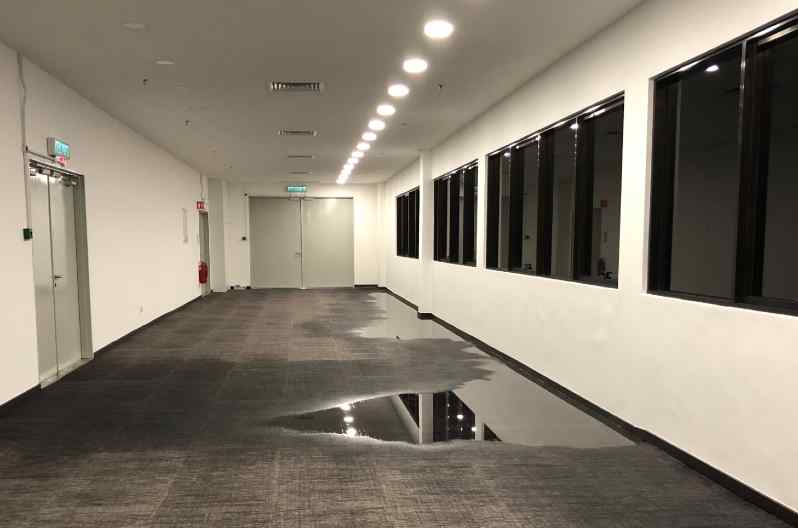In the wake of a flood or sewage backup, you may not think about the health risks associated with water damage. However, there are many dangers of water damage to consider before you begin the cleanup process. We outline the health risks of the three water damage categories. Plus, we cover what you need to safely clean up any type of water damage.
What Are the Categories of Water Damage?
There are three types of water damage:
- Category 1: Clean water
- Category 2: Grey water
- Category 3: Black water
These categories are used to determine the health risks of the water that caused the damage. Clean water is fresh water directly from a pipe or faucet and has very little risk. Grey water is an overflowing toilet or a dishwasher flood and has some risk of danger. Black water is a raw sewage backup and poses a major health risk.
Why the Health Risks of Water Damage Get Worse With Time
If you have water damage from clean water, you may think you’re safe. However, clean water will become contaminated over time. Mold and bacteria in the air or on items within your house will grow in the water.
In as little as 24 to 72 hours, clean water could become grey water. Similarly, grey water will turn into black water in the same amount of time.
However, it’s hard to estimate just exactly how fast the water will get contaminated. For example, clean water will become blackwater much faster if the contaminated area contains old, musty boxes than if it’s clean plastic containers.
What Are the Health Risks Associated With Each Water Damage Category?
The dangers of water damage depend largely on the type of water involved as well as time and the conditions. For this reason, you should clean up the water as soon as possible. The longer you wait, the greater the risks of illness and disease. Also, keep children and pets away from any of the types of water damage for their own safety.
What Are the Health Risks of Clean Water?
Of the types of water damage, clean water is the safest. Although the health risks are low, you should still wear minimal personal protective equipment. This includes rubber boots or waders, pants, long sleeves, rubber gloves, safety goggles and a ventilator.
What Are the Health Risks of Grey Water?
Since grey water has some risks of damage, you should take extra precautions when cleaning it up. In addition to the equipment needed for clean water, also wear goggles or a full face shield.
Keep grey water out of your eyes, nose and mouth and bandage cuts or scraps right away. Also, the fumes can be overwhelming so take frequent breaks in the fresh air.
What Are the Health Risks of Black Water?
Black water is the most dangerous and can make you very sick. The most common health risks are infections, respiratory problems and rashes. Due to those risks, avoid coming into contact with black water.
If you plan to clean up black water on your own, wear all of the protective clothing outlined above. You should also wear waterproof clothing and seal seams with tape to keep water out.
If you want to avoid the dangers of water damage during clean up, we have water damage cleanup specialists near you. They will remove the water and clean up the damage, getting your home back to normal fast. Call 1-888-443-3110 now for a risk-free estimate on restoration regardless of the water damage category.





